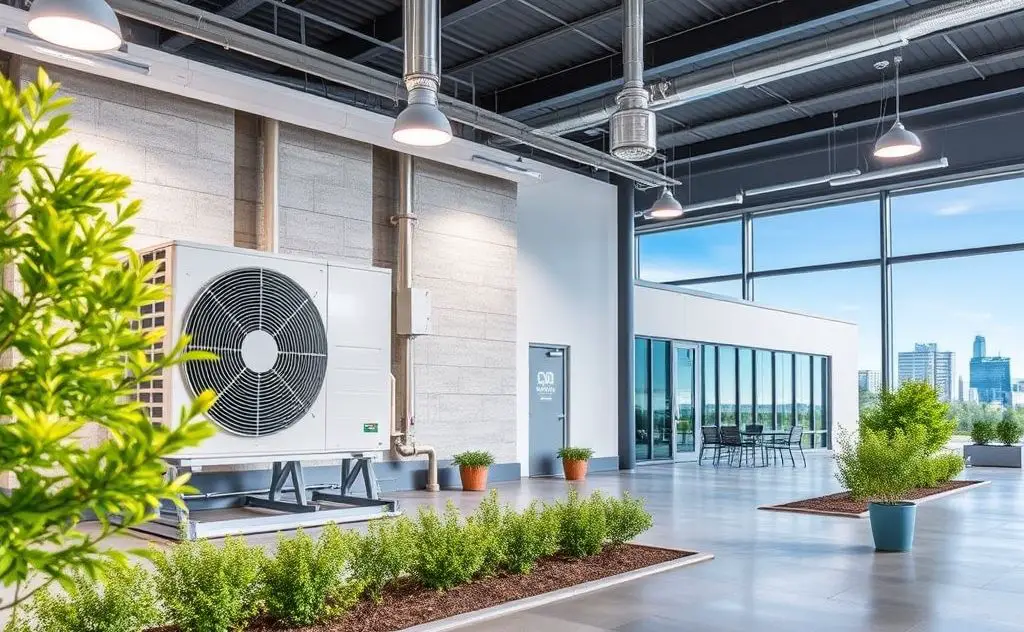Businesses can enhance efficiency, reduce energy costs, and improve customer comfort by leveraging IoT in HVAC systems for real-time monitoring and automation.
The Internet of Things (IoT) is revolutionizing commercial HVAC systems, offering businesses unprecedented control, cost savings, and energy efficiency. By 2025, 68% of commercial buildings will use IoT-enabled HVAC solutions according to industry forecasts.

5 Key Benefits of IoT for Business HVAC Systems
1. Slash Energy Costs by 20-30%
IoT sensors continuously monitor:
- Occupancy patterns
- Weather conditions
- Equipment performance
Smart algorithms automatically adjust temperatures in unused spaces. A Department of Energy study found this can reduce HVAC energy use by 25% in commercial buildings.
2. Predictive Maintenance Prevents Costly Breakdowns
Vibration, temperature and pressure sensors detect issues like:
- Failing compressors
- Dirty filters
- Refrigerant leaks
This allows repairs before catastrophic failures occur. The average cost of emergency HVAC repairs is $1,200 vs $300 for scheduled maintenance.
3. Remote Monitoring Saves Labor Costs
Facility managers can:
- View real-time system dashboards
- Receive mobile alerts
- Adjust settings remotely
This reduces the need for on-site technicians by up to 40%. For multi-location businesses, the savings are even greater.
4. Improved Air Quality Boosts Productivity
IoT-enabled HVAC systems monitor and optimize:
- CO2 levels
- Humidity
- Particulate matter
Studies show proper ventilation can increase worker productivity by 8-11%.
5. Seamless Integration with Building Systems
IoT HVAC connects with:
- Lighting controls
- Security systems
- Window sensors
This creates a responsive building ecosystem that maximizes efficiency.

Real-World IoT HVAC Success Stories
Retail Chain Cuts Energy Bills by $120k Annually
A national retailer installed IoT sensors across 35 locations. The system automatically:
- Reduces AC when stores are empty
- Adjusts ventilation based on foot traffic
- Optimizes equipment run times
Hospital Improves Air Quality by 40%
A 300-bed hospital implemented IoT air quality monitoring. The system now:
- Detects pathogen risks in real-time
- Automatically increases filtration when needed
- Provides compliance reporting
Choosing the Right IoT HVAC Solution
When evaluating systems, consider:
| Feature | Basic | Advanced |
|---|---|---|
| Remote Monitoring | ✓ | ✓ |
| Predictive Maintenance | ✗ | ✓ |
| AI Optimization | ✗ | ✓ |
| Multi-System Integration | Limited | Full |
For businesses with complex needs, advanced systems like Rheem’s ProTerra offer the most comprehensive IoT features.
Implementation Tips for Maximum ROI
Start With High-Impact Areas
Focus first on:
- Server rooms
- High-traffic spaces
- Energy-intensive equipment
Train Staff on New Capabilities
Ensure your team understands how to:
- Interpret dashboard data
- Respond to alerts
- Adjust automation rules
Plan for Ongoing Optimization
Review system performance quarterly to:
- Update automation rules
- Identify new savings opportunities
- Adjust to changing business needs
For businesses considering upgrades, built-in gas heaters with IoT capabilities can provide both comfort and smart functionality.
The future of commercial HVAC is intelligent, connected systems. Businesses that adopt IoT solutions today will gain a competitive advantage through lower costs, improved comfort, and sustainable operations. As ASHRAE research shows, the ROI on smart HVAC investments typically pays back in 2-3 years through energy savings alone.
